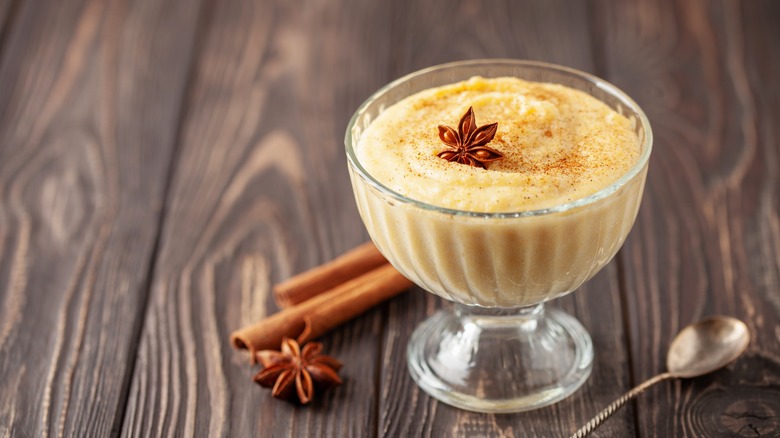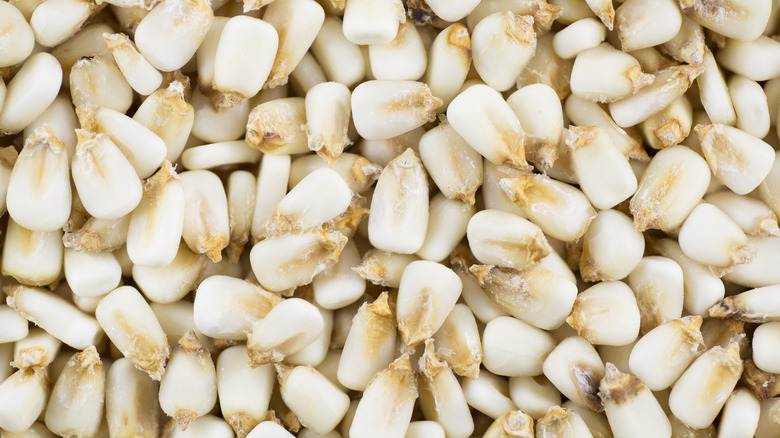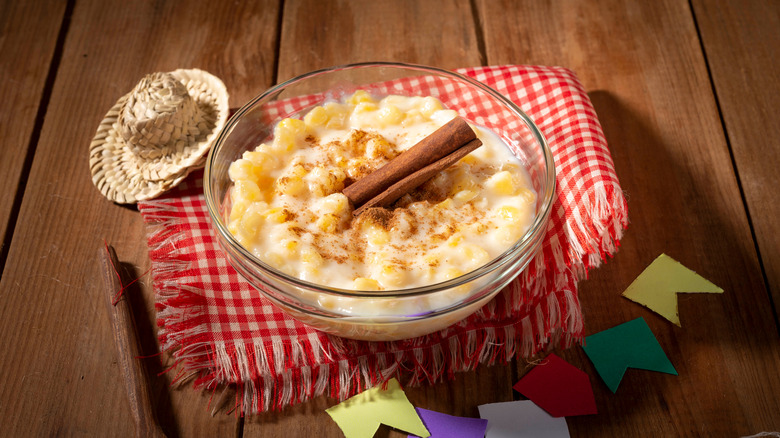Brazil's Canjica De Milho Dessert Has Been Around Since The 17th Century
Brazil is the country that produces the most sugar in the world, so it may come as no surprise that it has some top-notch desserts that may be worth hopping on a plane for. With a climate ideal for growing tropical fruits, dairy as a dietary staple, and cane sugar galore, Brazil's diverse regions have created their own indulgent, sweet desserts. One of them is canjica de milho.
The sweet dessert, which means corn hominy in Portuguese, commonly makes an appearance in Brazil's southern region during the winter months (June to September), according to Serious Eats. The thick pudding-like dessert is mainly made from corn or hominy, as the name suggests, and its typically sweetened with sugar and served during the country's corn harvest season.
While this dish is a popular dessert eaten at certain celebrations in the country, its origins lie in the 17th century with Brazil's enslaved populations.
History of canjica de milho
Canjica de milho is a dish most often found in Brazil's southern region, and it is usually served during the Festa Junina (via Amigo Foods). The holiday was first introduced to the country by the Portuguese colonists, and it both commemorates the Catholic saint, John the Baptist, and celebrates the end of the rainy harvest season, according to Vista Create.
According to Serious Eats, just like many dishes in Brazil's diverse cuisine, canjica de milho originated with the enslaved Africans and Afro-Brazilian communities in the country, specifically during the 17th century. This is not surprising, as today, much of Brazil's cuisine and overall way of life has been formed by a fusion of cultures. The mix of indigenous groups, enslaved Africans, Portuguese colonizers, and other immigrants that have chosen the country as their home have all fused to shape modern Brazilian life, Britannica notes.
Ingredients in canjica de milho
The main ingredient in canjica de milho is either corn or dried hominy, which makes it a fitting treat to whip up during a celebration of a corn harvest. Hominy, if you didn't know, is corn that has undergone a process known as nixtamalization in which the corn kernels are placed in an alkali solution that dissolves the hull and germ and causes them to swell (via Food Network). The main ingredients in Amigo Food's recipe include corn, sugar, sweetened condensed milk, and full-fat coconut milk.
The final result is a warming dessert perfect for consuming in Brazil's coldest months. The diverse use of spices balances nicely with the sweet flavors. And if that lineup of flavors doesn't suit you, don't worry. The dish is very customizable, and you can add your own mix of special seasonings or garnishes to create a dessert perfect for your palate.
How canjica de milho is made and eaten
This dessert is excellent to prepare if you are low on time, as it is relatively simple and (besides one step) can quickly be thrown together. According to Amigo Food's recipe, the first (and only time-intensive) step is to get some hominy and soak it overnight since it's primarily found in dried form, according to Serious Eats.
Next, take the softened soaked hominy and boil it for about an hour to soften further (via Allrecipes). After this, the milks and seasonings are all added to the pot and brought to a simmer until the mixture thickens into a pudding-like consistency. The site recommends tasting the dessert before serving, as it sometimes can require an extra scoop of sugar. If you'd like to add particular garnishes, like coconut shaving or peanuts, whole cinnamon sticks, or cloves, they can be sprinkled in once the dessert is spooned into serving bowls.



